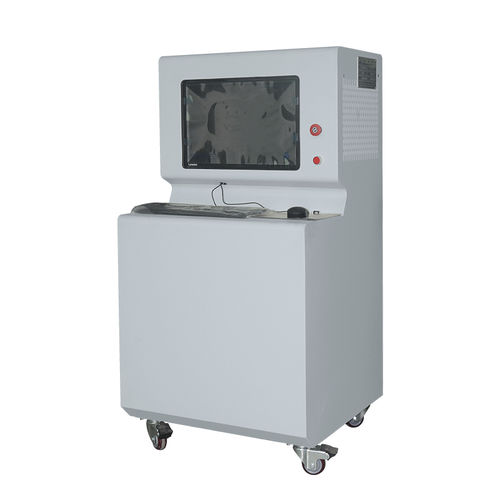
#Industry News
About Thermal Runaway of Power Lithium-ion Battery
About Thermal Runaway of Power Lithium-ion Battery
Thanks to the warm attention of new energy, the power lithium-ion battery industry has also attracted much attention. Power lithium-ion battery is the power source for tools to supply power. It mostly supplies power for electric vehicles, electric bus, electric bicycles and sightseeing car.
Focusing on the thermal runaway of power lithium-ion battery (mainly high-temperature thermal runaway), this paper discusses various factors affecting the safety of lithium-ion battery, and how to further improve the safety of lithium-ion battery. Three causes of thermal runaway of power lithium ion battery, and some treatment methods and suggestions are put forward.
Heat inducement
Usually, thermal inducement is power battery work in the high-temperature environment, including external fire, poor battery heat dissipation, etc. At external high temperature, due to the structural characteristics of lithium-ion battery, SEI membrane and electrolyte will have analytical reaction, and the analytes of electrolyte will also react with positive and negative electrodes. The cell diaphragm will melt for analysis, and a variety of reactions will lead to the emergence of a large amount of heat. Diaphragm’s melting leads to internal short circuit, and the release of electric energy increases the temperature. This cumulative and mutually reinforcing destructive use will lead to the breakage of the explosion-proof film of the cell, the ejection of electrolyte, combustion and fire.
In this regard, manufacturers can deal with it from two aspects: battery design and BMS battery management system. From the perspective of battery design, materials can be developed to guard against thermal runaway and block the reaction of thermal runaway; From the perspective of battery management, different temperature ranges can be predicted to mean different safety levels, so as to carry out hierarchical alarm.
At present, the power lithium-ion batteries of electric vehicles on the market contain thermal management systems, which use air-cooled or water-cooled methods to dissipate heat for the batteries. Relevant users should start from their use habits to eliminate heat incentives, such as guarding against vehicles in direct sunlight, not placing inflammables in the vehicle, etc. at the same time, they should always keep on-board fire extinguishers to eliminate spontaneous combustion factors. In addition, always pay attention to the battery temperature information on the instrument panel or central control screen. Generally speaking, the working temperature of the battery unit is between 40 ℃ and 50 ℃, which is not conducive to the use of the battery if it is higher or lower than this temperature range.
Electrochemical inducement
Impurities in battery manufacturing, metal particles, shrinkage of charge discharge expansion, lithium evolution, etc. may cause internal short circuit. This internal short circuit occurs slowly for a very long time, and we don’t know when it will get out of thermal control. If the experiment is carried out, the verification cannot be repeated. At present, experts all over the world have not found a process that can repeat the internal short circuit caused by impurities, and they are all studying it.
To solve this problem, firstly, improve the manufacturing process and reduce impurities in battery manufacturing. This requires the selection of battery manufacturers with good product quality. Secondly, the safety prediction of internal short circuit shall be carried out. Before thermal runaway occurs, the monomer with internal short circuit shall be found. This means that we have to find the characteristic parameters of monomers, and we can start with consistency. The battery is inconsistent, and the internal resistance is also inconsistent. As long as we find the monomer with variation in the middle, we can distinguish it. In detail, the equation form of the equivalent circuit of a normal battery and the equivalent circuit with micro short circuit is actually the same, but the parameters of normal monomer and micro short circuit monomer have changed. These parameters can be studied to see some characteristics in the variation of internal short circuit.
A large number of lithium ions are embedded in the negative electrode of the battery in the fully charged state. After overcharge, lithium precipitation occurs on the negative electrode, needle like lithium metal crystallization occurs, pierces the diaphragm and short circuit occurs. In the BMS battery management system, there will be overcharge protection strategy. When the system tests that the battery voltage reaches the threshold, it will turn off the charging circuit to protect the battery. Although the manufacturer will detect the electrical performance of some trains for BMS before leaving the factory, in order to prevent it, it is not recommended that users charge electric vehicles for a long time, and choose formal charging equipment to eliminate the hidden danger of overcharge.
Mechanical and electrical incentives
Collision is a typical way of mechanical contact heating out of control, that is, battery damage caused by car collision accident. When the battery is damaged, there will also be internal short circuit and heating out of control. However, this short circuit is different from the short circuit caused by electrochemical inducement. Mechanical damage generally occurs instantaneously. Corresponding to sudden accidents in real life, strong impact, rollover and extrusion can lead to mechanical damage of the battery in a very short time.
The way to deal with the out of control of collision (Mechanical) contact heating is to do a good job in the structural safety protection design of the battery. Therefore, here are three design routes:
1.Assembly structure design: plastic frame support + steel belt pre tightened assembly structure and high-strength skeleton;
2.Anti collision lightweight design: anti-collision CAE structure optimization; The battery module meeting the strength requirements is lightweight, and the mass group efficiency of the square shell system is 90%;
3.Positioning and locking technology of battery pack: use limit self-locking and single locking mechanism to accurately locate and lock the battery pack.
Some experts believe that the electric vehicle battery should meet the performance and safety related requirements, and the safety detection and verification should meet the safety requirements of thermal detection (high temperature hazard, thermal stability, no thermal management cycle, thermal shock cycle, passive propagation resistance), electrical detection (short circuit, overcharge and overdischarge) and mechanical detection (impact, drop, puncture, rolling, immersion and crushing). However, this does not mean that power lithium-ion battery companies can rest assured. There is no end to safety and improving the safety of electric vehicles requires the joint efforts of the state, scientific research institutions and the whole industrial chain of power lithium-ion batteries.
In the more than 100 year history of the development of fuel vehicles, accidents have occurred continuously. Setbacks are the law of the development of anything. Therefore, for all kinds of accidents, the industrial chains of electric vehicles should not stop, but should examine and improve their own problems and deficiencies. At the same time, we should also realize that consumers’ requirements for safety are endless, and we should make safety the primary condition to meet all functions. DGBELL can provide The Thermal Runaway Test Machine. We have engaged in the battery test chamber manufacturing more than 15 years. Just let we know what kind of battery you need to test, and we will give you a perfect solution within 12 hours.






